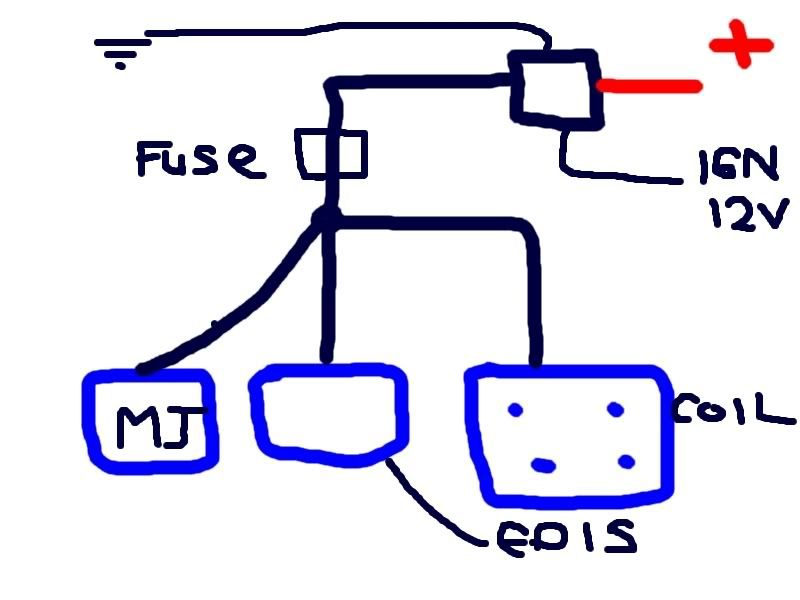Simple Ohms Law with a 0.5R primary coil resistance gives a nominal current of 12v/0.5R = 24 Amps
- if the coil is switched on permanently (not a standard mode of operation with EDIS admittedly) then this is the current that will flow. So that is why most traditional ignition systems (dizzy/points/coil) are protected with a circa 30A fuse - so that the ignition can be turned on with the engine off and the points closed
- the peak currents in the coil in normal low rpm (EDIS/MJLJ) conditions is circa 11 Amps (see
http://www.bgsoflex.com/igncoil.html)
Hence 15A seems a reasonable compromise - above normal operating values but not too far above.
Personal experience with the MJLJ is that if you have some sort of short inside the unit, the first thing to blow is the PCB tracks which is tricky to repair. MJLJ draws virtually no current (30-40mA) normally so you should use a very low fuse - hence my suggestion for a fuse in the region of 3A to 5A. Protect MJLJ with a 15A fuse (original suggestion) would be fine - but the MJLJ is likely to decompose pretty badly before the fuse blows in some failure modes

So I'd still advocate that the 'proper' solution is two fuses - 15A for EDIS/coil and 5A for MJLJ.
YMMV, $0.02 etc etc


